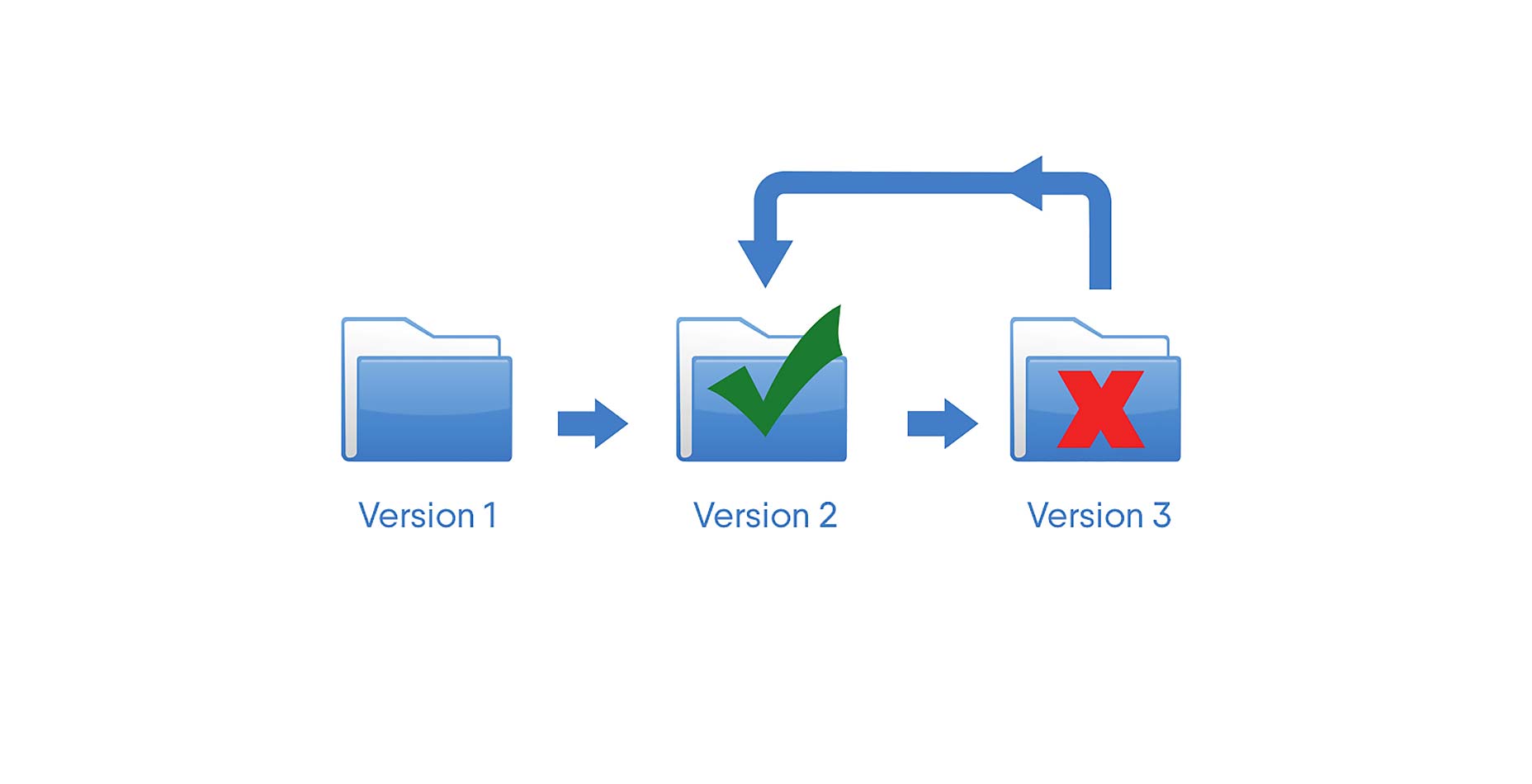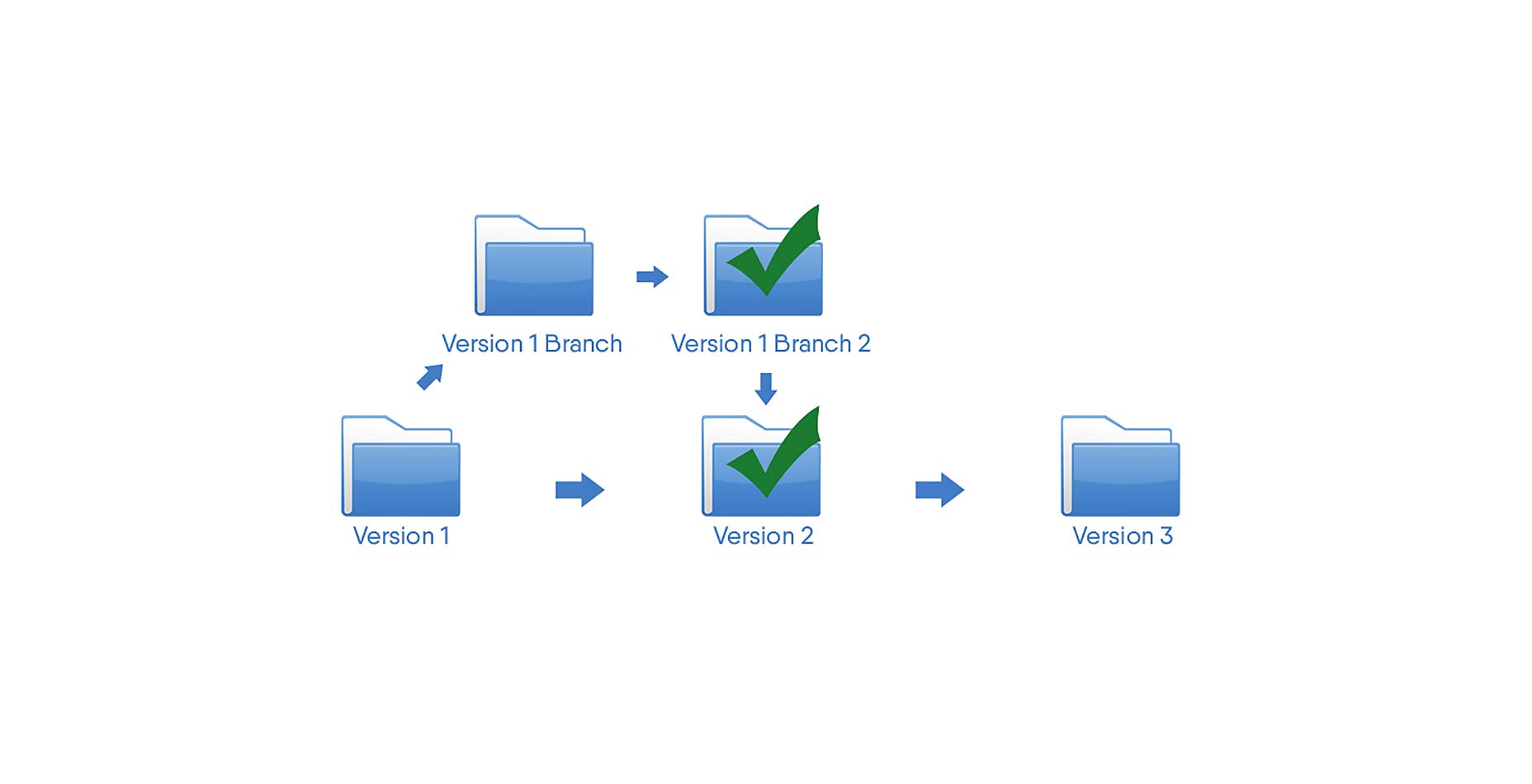
As a designer
How many times have you created a design file for a client in Photoshop or Illustrator, and ended up with around 10 different versions or variations of the same design? I sure have, but what we end up with is something like this:- Client File
- Client File New
- Client File Newest
- Client File Final
- Client File Final Final
- Client File Ultimate Final
The value of version control

It keeps you from overwriting working files
The last thing you want to do is save over the working copy of your files. What if something goes wrong? You’ll need a copy of your code that is saved at a good point where everything still works. Having a safeguard against overriding previous versions is a must, unless you want to start all over again.Teams can share projects and work on the latest files
Having a version control system in place will allow teams to work on the latest files of a project. This keeps members from working on older versions that may have bugs in them that other team members may have addressed and eliminated. Version control keeps everything organized and reduces team-wide errors.Accountability and user tracking
Version control enables you to keep track of who worked on a file and when. When a user makes changes and uploads those changes, they make notes, which enables the team to keep track of changes and when they took place in the development process. This is important, because if you discover a problem later, you can work backwards to the point where things went awry. Then, you can look at the changes that were made, which can help diagnose the problem.Communication
When a teammate makes notes, it can also help to keep track of the progress of a project. Let’s say a team member is responsible for four tasks, but they only mention three in their notes, it will prompt other members to check in to make sure everything was completed. This can keep you from having holes in your projects.
Branching and merging files or folders
Branching enables a user to create a separate copy of a selection of files or folders that they can work on exclusively. This allows developers to test things separately, without having to worry about breaking the original. Once all of the bugs are worked out, you can merge those changes back into the core system. Having the ability to separate projects into different pieces enables team members to work on areas they are responsible for, without affecting others’ work. This is especially useful for specialty development, where a team can work on standard core features, while specialty features can be worked on separately and merged later. It speeds up development, helping projects to go faster.
Once all of the bugs are worked out, you can merge those changes back into the core system. Having the ability to separate projects into different pieces enables team members to work on areas they are responsible for, without affecting others’ work. This is especially useful for specialty development, where a team can work on standard core features, while specialty features can be worked on separately and merged later. It speeds up development, helping projects to go faster.
Conflicts
Having multiple people working on different parts and pieces means that you’re dealing with a multi-faceted project. There are bound to be conflicts: team member 1 and team member 3 might create something that conflicts with each other, leaving the project broken. Version control counteracts this by allowing you to choose one path or the other. As a team you can decide what is best, and move forward from that point. Then, like before, everyone receives the latest working files and everyone is on the same page with the project.
Locating differences in files
With so many people working on a project, and so many different versions, it can be tough to locate the differences in files without version control. Finding these differences is essential to diagnosing where something went wrong. You can make comparisons and find where there is a conflict, or a change that someone made that caused problems. Otherwise, it’s tough, from a human perspective, to narrow things down. The whole process is less daunting when you can narrow your focus to specific areas of a project.It just makes everything less of a headache
Similar to how a content management system works for a website, version control makes it easier to manage multi-part projects. It allows you to focus more on the project itself instead of managing the process. Having a system in place will make projects go more smoothly.James George
James George is a Professional Web & Graphic Designer. He owns Design Crawl, a site for graphic designers featuring free vector graphics and templates. He also owns G Squared Studios, which handles web design in Knoxville.
Read Next
3 Essential Design Trends, May 2024
Integrated navigation elements, interactive typography, and digital overprints are three website design trends making…
20 Best New Websites, April 2024
Welcome to our sites of the month for April. With some websites, the details make all the difference, while in others,…
Exciting New Tools for Designers, April 2024
Welcome to our April tools collection. There are no practical jokes here, just practical gadgets, services, and apps to…
14 Top UX Tools for Designers in 2024
User Experience (UX) is one of the most important fields of design, so it should come as no surprise that there are a…
By Simon Sterne
What Negative Effects Does a Bad Website Design Have On My Business?
Consumer expectations for a responsive, immersive, and visually appealing website experience have never been higher. In…
10+ Best Resources & Tools for Web Designers (2024 update)
Is searching for the best web design tools to suit your needs akin to having a recurring bad dream? Does each…
By WDD Staff
3 Essential Design Trends, April 2024
Ready to jump into some amazing new design ideas for Spring? Our roundup has everything from UX to color trends…
How to Plan Your First Successful Website
Planning a new website can be exciting and — if you’re anything like me — a little daunting. Whether you’re an…
By Simon Sterne
15 Best New Fonts, March 2024
Welcome to March’s edition of our roundup of the best new fonts for designers. This month’s compilation includes…
By Ben Moss
LimeWire Developer APIs Herald a New Era of AI Integration
Generative AI is a fascinating technology. Far from the design killer some people feared, it is an empowering and…
By WDD Staff
20 Best New Websites, March 2024
Welcome to our pick of sites for March. This month’s collection tends towards the simple and clean, which goes to show…
Exciting New Tools for Designers, March 2024
The fast-paced world of design never stops turning, and staying ahead of the curve is essential for creatives. As…















